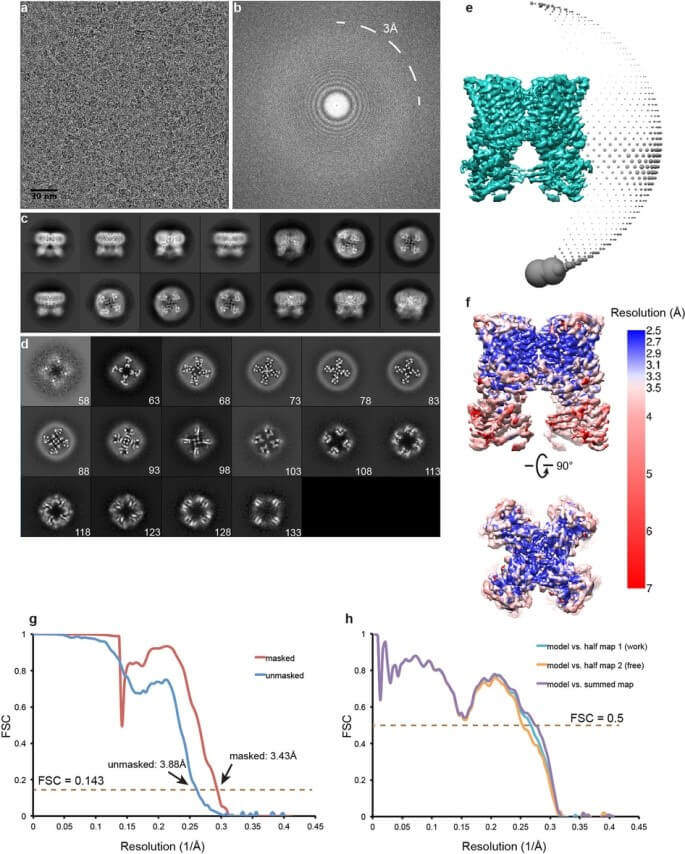Mempro™ Nanodisc Analysis
Creative Biostructure has been focusing on nanodiscs technology research for years,our team has established an advanced Mempro™ nanodiscs analysis platform to provide various services to meet client’s requirements.
Nanodiscs are soluble nanoscale phospholipid bilayers, encircled and stabilized by membrane scaffold proteins (MSP). They have been proven to be powerful and promising tools to study membrane proteins. Compared with other strategies, such as liposomes, bicelles and detergent micelles, nanodiscs are more close to native environment where proteins remain monodisperse and active. Creative Biostructure offers a variety of approaches for nanodisc analysis, including surface plasmon resonance (SPR), Nuclear magnetic resonance (NMR) spectroscopy, electron paramagnetic resonance (EPR), native Polyacrylamide Gel Electrophoresis (PAGE), free flow electrophoresis (FFE) and Chromatography.
 Figure 1. Single-particle cryo-EM of unliganded TRPV1 in lipid nanodisc. (Gao, Y. 2016)
Figure 1. Single-particle cryo-EM of unliganded TRPV1 in lipid nanodisc. (Gao, Y. 2016)
- Surface Plasmon Resonance (SPR)
SPR is a significant technique to identify the interactions of almost all molecular systems. Compared with other nanodisc analysis techniques, SPR has two remarkable advantages: real-time analysis and no labeling needed. SPR biosensors have quickly turned into a standard technique in the biotechnology and pharmaceutical industries. - Nuclear Magnetic Resonance (NMR) Spectroscopy
NMR spectroscopy is a potent technique that utilizes the magnetic performance of certain atomic nuclei. This potential technique detects dynamics, reaction state, structure, and the chemical state of molecules. - Electron Paramagnetic Resonance (EPR) Spectroscopy
EPR is a technique for studying specimens with unpaired electrons. The fundamental theory of EPR is similar to NMR. However, its electron spins are activated instead of atomic nuclei. Metal complexes and organic radicals can be detected by EPR spectroscopy. - Native Polyacrylamide Gel Electrophoresis (PAGE)
Native PAGE is a strong technique for researching the composition and structure of native proteins, because it doesn’t break the conformation and biological activity of proteins during the detection process. - Free Flow Electrophoresis (FFE)
FFE is a matrix-free electrophoretic separation technique. This technique is similar to capillary electrophoresis, and on account of its versatility, a broad range of sample can be separated, such as protein isoforms, nanoparticles, DNA origami, organelles, rare metal ions, etc. - Chromatography
Chromatography is a laboratory techniques for the separation of mixtures. The differential partition of mobile and stationary phases is the key foundations of the separation. Various chromatographic bed shapes have been developed, for example, column chromatography, planar chromatography, paper chromatography and thin layer chromatography (TLC)
Creative Biostructure also provides other various Mempro™ nanodisc technology services. Please feel free to contact us for more detailed quote.
References:
Gao, Y. (2016). “TRPV1 structures in nanodiscs reveal mechanisms of ligand and lipid action”. Nature.
Justesen, B. H. (2014). “Chromatographic and electrophoretic methods for nanodisc purification and analysis”. Reviews in Analytical Chemistry, 33(3), 165-172.
